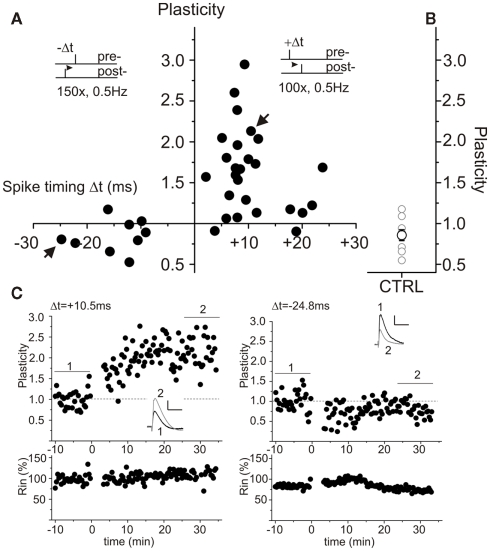Figure 1.
Spike timing-dependent plasticity (STDP) in ACSF prepared rat hippocampal slices. Synaptic responses were recorded in the current clamp mode in CA1 pyramidal neurons of juvenile rats (P15–P20). Pre-stimulus membrane potential prior to recording was −70 mV for all cells. Presynaptic stimulation of Schaffer collaterals was performed every 20 s. (A) Single spike pairings at short positive (Δt = +2 to +25 ms) intervals lead to t-LTP. Negative (Δt = −8 to −25 ms) pairings result in t-LTD. Insets show the employed pairing paradigms. (B) Summarized control measurements (n = 9, mean ± SEM) without spike pairing in ACSF prepared slices. (C) Examples of single experiments for positive pairing (left) and negative pairing (right). The corresponding cells are indicated with arrows in (A). Respective averaged original traces are shown as insets, analysis of input resistance is shown in the lower graphs. Bar scales: 1 mV, 50 ms.

